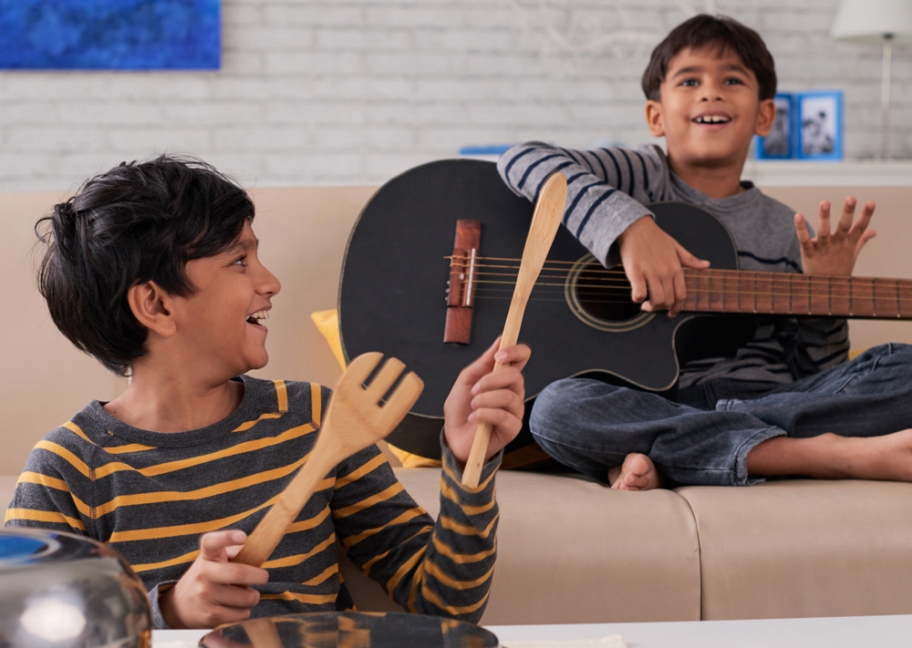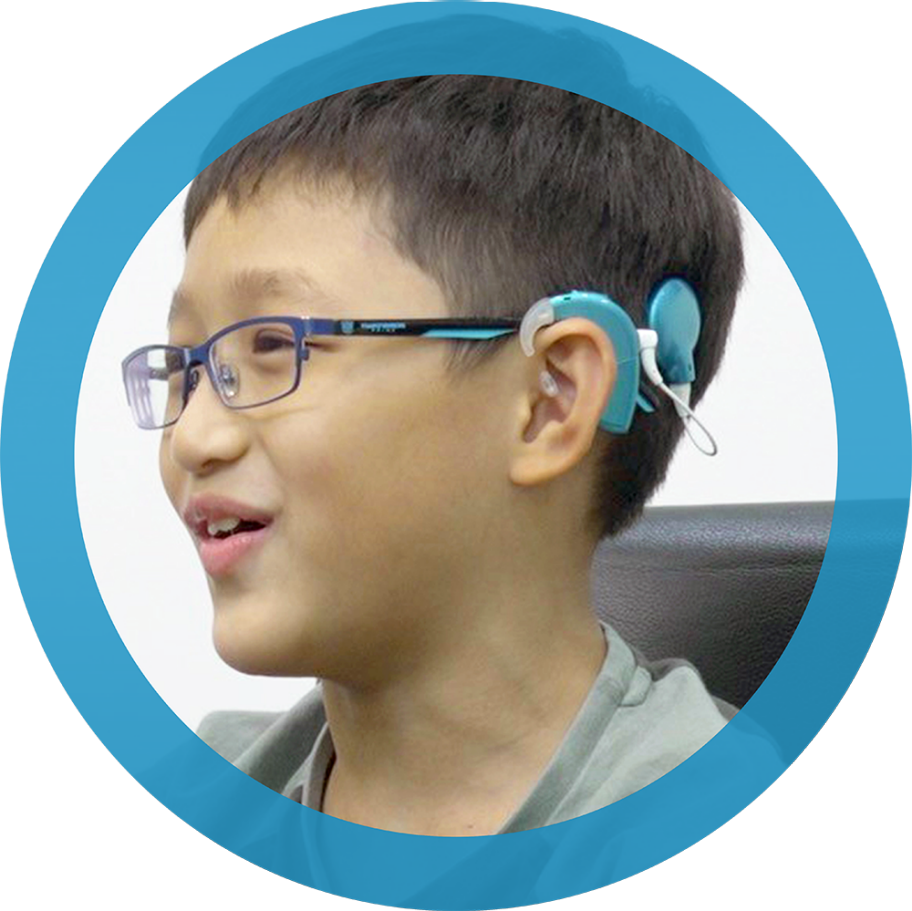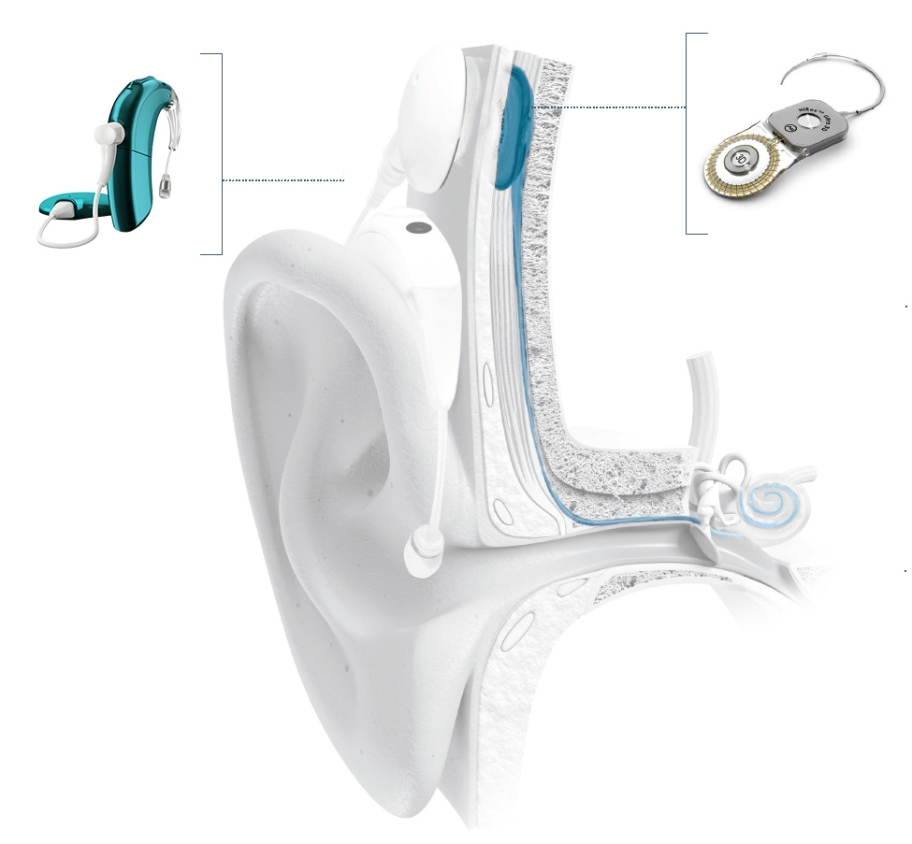
Early Action Matters for Children with Hearing Loss
The powerful impact of getting a cochlear implant system early.
"For parents with a child who is a CI candidate, the best gift they can give their child is the decision to implant early. The technology is so advanced, and with the added advantage of a young child’s brain, the results will be remarkable as long as parents are supportive and encouraging throughout the process."
Julius P.
Father of AB CI Wearer, Titus P.
Hearing Loss in Children
Hearing loss affects 1 to 4 infants per 1,000 births.1 When left untreated, it can become a struggle to learn and connect socially with family, friends, and the world.

As parents of a child with hearing loss, being informed about hearing loss in children is the first step towards making the best decision for your child’s future. The field of hearing science and technology has made tremendous advancements in recent years. We live in a time where there’s a hearing solution for any type and degree of hearing loss. Acting early to address your child’s hearing loss is crucial.

Support Your Child on Their Hearing Journey
Childhood is a magical time of discovery and learning. And you want to make sure your child can actively participate in it all. As parents of a child with hearing loss, you may have many questions and concerns about what the future will bring. Millions of families around the world, just like yours, are coming to terms with the fact that their child will need help hearing.
Your journey starts with gathering information and understanding what may lie ahead for you and your child.
By improving your child’s hearing, you are gifting them the opportunity to make powerful connections with their family, friends, and the world around them.
Understanding Your Child's Hearing Loss
Every child is unique. And hearing loss can affect them in different ways. Four key factors—age, degree, intervention, and support—can determine what impact hearing loss might have on their lives.
1.
AGE
A child’s first years are the most important for speech and language development. So the impact of hearing loss is greatest in those who are born with or develop hearing loss soon after birth.
2.
DEGREE
The degree of hearing loss may range from mild to profound. The greater the severity, the greater the impact.
3.
INTERVENTION
The sooner a child is identified with hearing loss, and the earlier they receive support services, the greater the opportunity for learning spoken language.
4.
SUPPORT
Children with hearing loss who receive timely and appropriate treatment and intervention can grow and develop like others with normal hearing.

Did You Know?
Research shows that children who are born deaf or acquire hearing loss very early in life—and who receive appropriate interventions within six months of age—are at par with their hearing peers in terms of language development by the time they are 5 years old.2
Why It's Important to Act Early
A child's exposure to the number of words influences brain development and helps develop vocabulary and academic outcomes.3,4 For young children to develop spoken language and literacy, they need exposure to millions of words and thousands of hours of listening.3,5 Both quantity and quality matter. How well your child can hear the diversity and complexity of the language you use are highly crucial.6
For children with hearing loss, sounds do not reach the brain as they should. Taking action to address your child's hearing loss early gives them opportunities to develop the skills they need to live life to the fullest. To reach every milestone, enjoy every moment, and fully connect with the world of sound around them.

Think Beyond Hearing Aids
While hearing aids are a solution for many, they do not make your child's hearing perfect. They make sounds louder and more understandable. They can also reduce the impact of hearing loss on your child's life. However, even the most sophisticated hearing aids can only help if your little one still has some hearing left.
Your child’s hearing loss means that a portion of the ear is not functioning appropriately. Often, a hearing aid can compensate for the loss by making sounds louder and easier to hear. However, when the hearing loss is severe, making sounds louder may not be enough.
Cochlear implants are the standard treatment for children with severe or profound hearing loss. These devices make sounds easier to understand. They bypass the damaged portion of the cochlea and stimulate the hearing nerve to provide your child with the clarity of sound and speech they need to understand the world around them.
Cochlear Implants Changes Lives
When hearing health professionals determine that your child’s hearing aids are not effective, it is time to consider a cochlear implant.
Cochlear implants are currently the only medical solution able to functionally restore one of the five senses, which is why many physicians refer to them as “technological miracles.”
A cochlear implant system consists of two main components: an internal implant and an external sound processor. Unlike hearing aids, which amplify sounds, a cochlear implant bypasses the damaged portion of the ear to deliver sound signals to the hearing (auditory) nerve.
Cochlear implant systems are a sophisticated technology designed to mimic natural hearing for those with significant hearing loss. Most cochlear implant wearers demonstrate improvement in their ability to understand speech, even in noisy environments, as compared to hearing aid wearers with significant hearing loss.
Hearing Aids vs Cochlear Implants
HEARING AIDS
- Worn on the ear.
- Recommended to children diagnosed with mild-to-moderate hearing loss (20 –70 dB).
- Capture, analyze, and amplify sound.
COCHLEAR IMPLANTS
- Consist of a device implanted into the ear, and another part worn on the ear.
- Recommended to children diagnosed with severe or profound hearing loss (above 70 dB).
- Transmit sound directly to the brain.
- Provide access to higher pitch sounds such as birds chirping.
- As technology improves, upgrading the sound processor allows your child to enjoy new listening features and expanded capabilities without needing to change the implant.
How Cochlear Implants Work
1
The Advanced Bionics microphones pick up sounds at the opening of the ear canal for the most natural listening experience.
2
The sound waves are converted into detailed digital signals by our sound processor.
3
Our headpiece sends the digital signals to the cochlear implant and electrode array in the inner ear.
4
The electrode array stimulates the hearing nerve.
5
The hearing nerve sends impulses to the brain, which interprets them as sounds.
The Transformative Benefits of a Cochlear Implant
Choosing a cochlear implant is a life-changing decision, as your child may:
- Have the potential to develop normal hearing, speech, and language skills.
- Be able to enjoy listening to music, watching television, and holding conversations over the phone.
- Gain a sense of inclusion, allowing them to socialize and connect with friends and family.
- Build the skills and confidence that will help them as they mature and attend school and begin working.
- Enjoy life without the limitations of hearing loss.

AB's Cochlear Implant System
Discuss Hearing Options for Your Child
Gathering information on hearing loss and cochlear implants can be overwhelming. Connecting with Advanced Bionics can help guide you towards the solution that’s right for your child.
Fill out the form below to schedule a no-obligation free consultation on cochlear implants and get our free guide to cochlear implants.
Alternatively, please email us at Info.SEA@AdvancedBionics.com.
REFERENCES
American Speech-Language-Hearing Association. Causes of Hearing Loss in Children. Available at: <https://www.asha.org/public/hearing/Causes-of-Hearing-Loss-in-Children/> [Accessed 27 June 2022].
World Health Organization, Child Hearing Loss. Act Now, Here’s How! Available at: <https://cdn.who.int/media/docs/default-source/documents/health-topics/deafness-and-hearing-loss/whd2016_brochure_en_2.pdf> [Accessed 27 June 2022].
Hart, B., & Risley T. R. (1995). Meaningful differences in the everyday experience of young American children. Paul H Brookes Publishing.
Romeo, R. R., Leonard, J. A., Robinson, S. T., West, M. R., Mackey, A. P., Rowe, M. L., & Gabrieli, J. D. E. (2018). Beyond the 30-million-word gap: Children’s conversational exposure is associated with language-related brain function. Psychological Science, 29(5), 700-710.
Dehaene, S. (2009). Reading in the Brain: The Science and Evolution of a Human Invention. Viking.
Hurtado, N., Marchmann, V. A., & Fernald, A. (2008). Does input influence uptake? Links between maternal talk, processing speed and vocabulary size in Spanish-learning children. Developmental Science, 11(6), 31-39.



